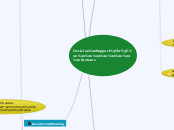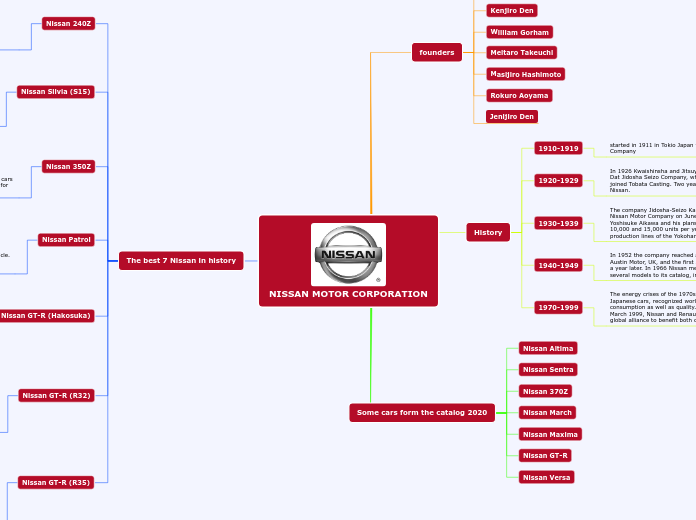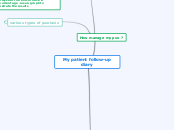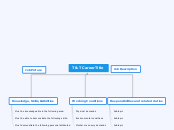Decision Support
Systems
Decision Making
Decision Making Process
Define the problem (or opportunity)
A process of choosing among two or more alternative courses of action for the purpose of attaining a goal(s)
Managerial decision making is synonymous with the entire management process
Decision-Making
Disciplines
Each discipline has its own set of assumptions and each contributes a unique, valid view of how people make decisions
Scientific: computer science, decision analysis, economics, engineering, the hard sciences (e.g., biology, chemistry, physics), management science/operations research, mathematics, and statistics
Behavioral: anthropology, law, philosophy, political science, psychology, social psychology, and sociology
Decision Style
A successful computerized system should fit the decision style and the decision situation
Should be flexible and adaptable to different users (individuals vs. groups)
Decision-making styles
Consultative (with individuals or groups)
Autocratic versus Democratic
Heuristic versus Analytic
They cannot be equated!
Various tests measure somewhat different aspects of personality
There are many such tests
Keirsey Temperament Theory
True Colors (Birkman),
Meyers/Briggs,
Personality temperament tests are often used to determine decision styles
When making decisions, people…
give different emphasis, time allotment, and priority to each steps
follow different steps/sequence
The manner by which decision makers think and react to problems
values and beliefs
cognitive response
perceive a problem
Phases of Decision-Making
Process
Implementation phase
Implementation: putting a recommended solution to work
Change management?
Solution to a problem = Change
Choice phase
Additional activities
Goal seeking
What-if analysis
Sensitivity analysis
Search approaches
Blind search (truly random search)
Heuristics (rule of thumb)
Algorithms (step-by-step procedures)
Analytic techniques (solving with a formula)
Solving the model versus solving the problem!
Includes the search, evaluation, and recommendation of an appropriate solution to the model
The boundary between the design and choice is often unclear (partially overlapping phases)
Generate alternatives while performing evaluations
The actual decision and the commitment to follow a certain course of action are made here
Design phase
Heuristic models (= suboptimization)
Help reach a good enough solution faster
Suboptimization may also help relax unrealistic assumptions in models
Often, it is not feasible to optimize realistic (size/complexity) problems
the chosen alternative is the best of only a subset of possible alternatives
Normative models (= optimization)
Assumptions of rational decision makers
Decision makers have an order or preference that enables them to rank the desirability of all consequences
For a decision-making situation, all alternative courses of action and consequences are known
Humans are economic beings whose objective is to maximize the attainment of goals
the chosen alternative is demonstrably the best of all possible alternatives
Selection of a Principle of Choice
Criterion is not a constraint
Choosing and validating against
Optimize versus satisfice
High-risk versus low-risk
In a model, it is the result variable
Reflection of decision-making objective(s)
It is a criterion that describes the acceptability of a solution approach
Intelligence phase
Outcome of intelligence phase:
A Formal Problem
Statement
Problem Ownership
Problem Decomposition
Often solving the simpler subproblems may help in solving a complex problem
Information/data can improve the structuredness of a problem situation
Problem Classification
Classification of problems according to the degree of structuredness
Decision Makers
Medium-to-large organizations
Help: Computer support, GSS, …
Consensus is often difficult to reach
Different styles, backgrounds, expectations
Groups
Small organizations
Conflicting objectives
Individuals
Model
The Benefits of Models
Web is source and a destination for it
Reinforce learning and training
Evaluation of many alternatives
Inclusion of risk/uncertainty
Cost of making mistakes on experiments
Lower cost of analysis on models
Compression of time
Ease of manipulation
Models can be classified based on their degree of abstraction
Mathematical (quantitative) models
Mental Models
Analog models
Iconic models (scale models)
Models can represent systems/problems at various degrees of abstraction
Much of the complexity is actually irrelevant in solving a specific problem
Often, reality is too complex to describe
A model is a simplified representation (or abstraction) of reality
A significant part of many DSS and BI systems
Business Intelligence (BI)
The Architecture of BI
Four major components
a user interface
business performance management
business analytics
a data warehouse
The Benefits of BI
Increased revenue (49%)
Improved customer service (56%)
Improved decision making (78%)
Faster, more accurate reporting (81%)
Styles of BI
statistics and data mining
ad-hoc queries
cube analysis (also known as slice-and-dice analysis)
enterprise reporting (using dashboards and scorecards)
report delivery and alerting
A Brief History of BI
However, the concept is much older
Inclusion of AI and Data/Text Mining capabilities; Web-based Portals/Dashboards
- OLAP, dynamic, multidimensional, ad-hoc reporting -> coining of the term “BI”
Executive Information Systems (EIS)
MIS reporting - static/periodic reports
The term BI was coined by the Gartner Group in the mid
Managerial Decision
Making
Mintzberg's 10 Managerial
Roles
Decisional
10- Negotiator
9- Resource allocator
8- Disturbance handler
7- Entrepreneur
Informational
6- Spokesperson
5- Disseminator
4- Monitor
Interpersonal
3- Liaison
2- Leader
1- Figurehead
Management Science Approach
Compare, choose, and recommend a potential solution to the problem
Identify possible solutions to the modeled problem and evaluate the solutions
Construct a model that describes the real-world problem
Classify the problem into a standard category
Define the problem
component
3- Measure of success: outputs / inputs
2- Output: attainment of goals
1- Inputs: resources
Dss
as a Specific
Application
In a narrow sense DSS refers to a process for building customized applications for unstructured or semi-structured problems
DSS can facilitate
decision via:
Using Web; anywhere, anytime support
Quality support; agility support
Overcoming cognitive limits
Improved data management
Increased productivity of group members
Improved communication and collaboration
Speedy computations
DSS Characteristics
and capabilities
Interactive and efficiency
Interactive and ease of use
Adaptable and flexible
Quick response
Support varieties of decision trees
Support varieties of decision processes
Standalone and web-based integration
Data access
Modeling and analysis
Ease of development by end user
Human control of the process
Support Intelligence, Design, Choice
Interdependence and sequence of decisions
Support individuals and groups
Support managers at all levels
Solve semi-structured and unstructured problems
Overall Capabilities of DSS
Support for all who needs it, where and when he/she needs it
Timely, correct, concise, consistent support for decision making
Easy to use, adaptive and flexible GUI
Proper management of organizational experiences and knowledge
Easy access to data/models/knowledge
Components of DSS
Knowledgebase Management Subsystem
Organizational knowledge base
User Interface Subsystem
Model Management Subsystem
Model base management system (MBMS)
Data Management Subsystem
Can be connected to a data warehouse
Database management system (DBMS)
Includes the database that contains the data
A Work System View
of Decision Support
Elements of a Work System
9- Technology. Better data storage and retrieval, models, algorithms, statistical or graphical capabilities, or computer interaction
8- Information. Better information quality, information availability, or information presentation
7- Strategy. A fundamentally different operational strategy for the work system
6- Environment. Better methods for incorporating concerns from the surrounding environment
5- Infrastructure. More effective use of shared infrastructure, which might lead to improvements
4- Customers. Better ways to involve customers in the decision process and to obtain greater clarity about their needs
3- Product and services. Better ways to evaluate potential decisions
2- Participants. Better training, better skills, higher levels of commitment, or better real-time or delayed feedback
1- Business process. Variations in the process rationale, sequence of steps, or methods used for performing particular steps
Definition
Work system: a system in which human participants and/or machines perform a business process, using information, technology, and other resources, to produce products and/or services for internal or external customers
Concept of Decision
Support Systems
Classical Definitions of DSS
Decision support systems couple the intellectual resources of individuals with the capabilities of the computer to improve the quality of decisions. It is a computer-based support system for management decision makers who deal with semistructured problems
Interactive computer-based systems, which help decision makers utilize data and models to solve unstructured problems
A Decision Support
Framework
Types of Control
Operational control
Management control (tactical planning)
Strategic planning (top-level, long-range)
Degree of Structured
Highly unstructured
Semi-structured
Highly structured
Architecture of
a DSS
knowledge
user interface
models
data
Types Of Dss
Data-oriented DSS
Model-oriented DSS









